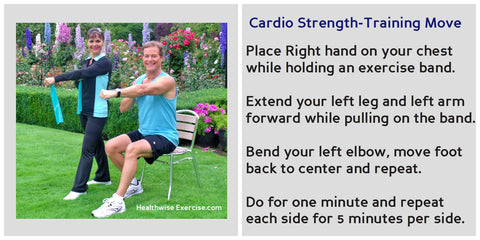4 Functional Fitness Tips to Increase Your Energy (Part 2)

Missed Part I? Click here to read it
Functional Fitness Tip 4: Take power naps.
I've always take a power nap when time allows as it helps me power through the rest of my very long and active day.
Of course, your fatigue could just be a sign that you're not getting enough sleep. Most adults require 7 to 9 hours of sleep each night, but most of us don't get that much. You can make up for lost sleep by taking power naps. Power naps can refresh you and improve your mental clarity and focus. To benefit, set aside 30 to 60 minutes for a restful nap during the day. Wear ear plugs or a sleep mask if lights or sounds disturb you.
Functional Ftiness Tip 5: Reduce stress and anxiety.
Have you ever felt emotionally exhausted? In times of stress, we tend to worry more. All of that worrying takes energy, so it's no wonder that stress is linked to low energy levels. Tell a trusted confidant about your worries and fears. If you've been harboring unspoken anger or keeping secrets, now is a great time to bring your feelings into the open. Keeping your emotions bottled up only stresses you out more, leading to greater exhaustion. Share your burden with someone else to get some perspective and lighten your load.
Functional Fitness Tip 6: Stay hydrated.
Fatigue is a symptom of dehydration, and is more common than you'd think. Many adults suffer from mild to moderate dehydration. If you're an athlete, frequent dieter, or diabetic, you could face an elevated risk of dehydration. Try to drink 64 oz of non-caloric beverages each day. Most of this fluid intake should come from plain water. Sugary sport drinks are rarely necessary, and caffeinated drinks can leave you more dehydrated. For the best results, find a portable drink container you like, and sip water from it throughout the day. If your energy level quickly rises, you'll know dehydration was keeping you tired.
Functional Fitness Tip 7: Address underlying health concerns.
A low energy level can be an indicator of a more serious condition. Fatigue is associated with depression, diabetes, malnutrition, sluggish thyroid, and a score of seasonal ills like colds and flu. I have a slow thyroid and combat low energy with medication and regular exercise. The medication is not enough and workouts that require hard core moves are too much. Low impact cardio and strength does the trick. If you suspect you may have a medical condition, ask your doctor to perform a thyroid test, blood glucose test, and routine blood work (CBC). The results will help you identify and treat the root cause of your lethargy, or rule out diseases so that you can look elsewhere for a cause. Healthiest blessings!
Would you like to lose weight and boost your energy doing low impact workouts that leave you exhilarated and not exhausted? Try Functional Fitness with Suzanne Andrews Total Body Strength and Conditioning.
Suzanne Andrews founded Functional Fitness in 2008, the most popular fitness series for boomers and seniors broadcasting on over 159 Public Television stations throughout the US and Canada. Read Suzanne’s inspiring comeback story of how she survived a near fatal accident, From Deaths Door to Producing a National Fitness Series. Feel free to send Suzanne a message here.






 Suzanne Andrews
Suzanne Andrews






